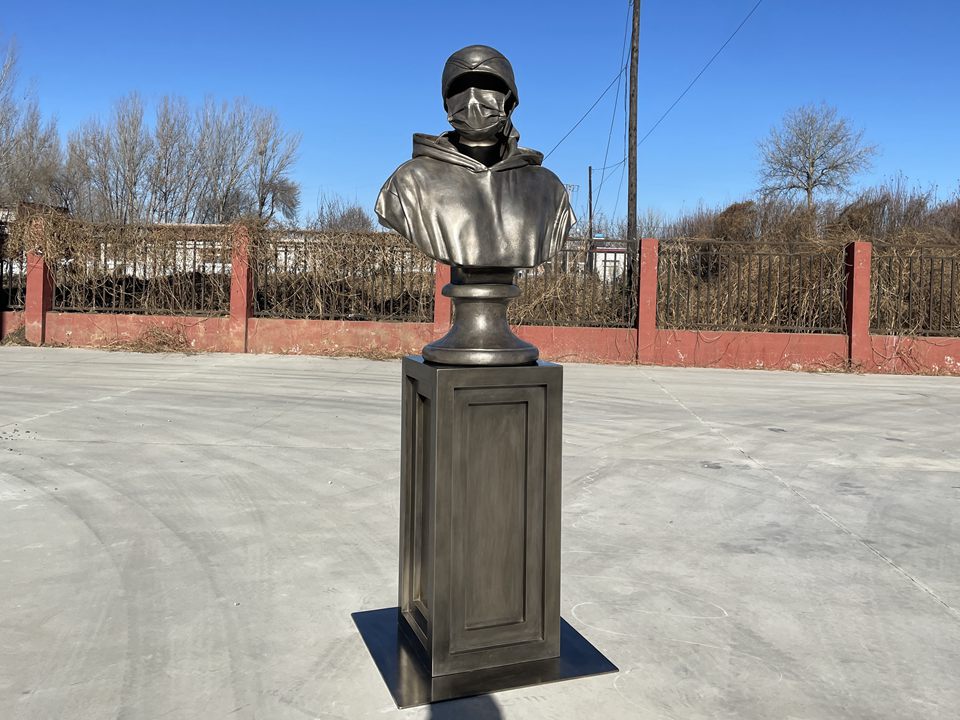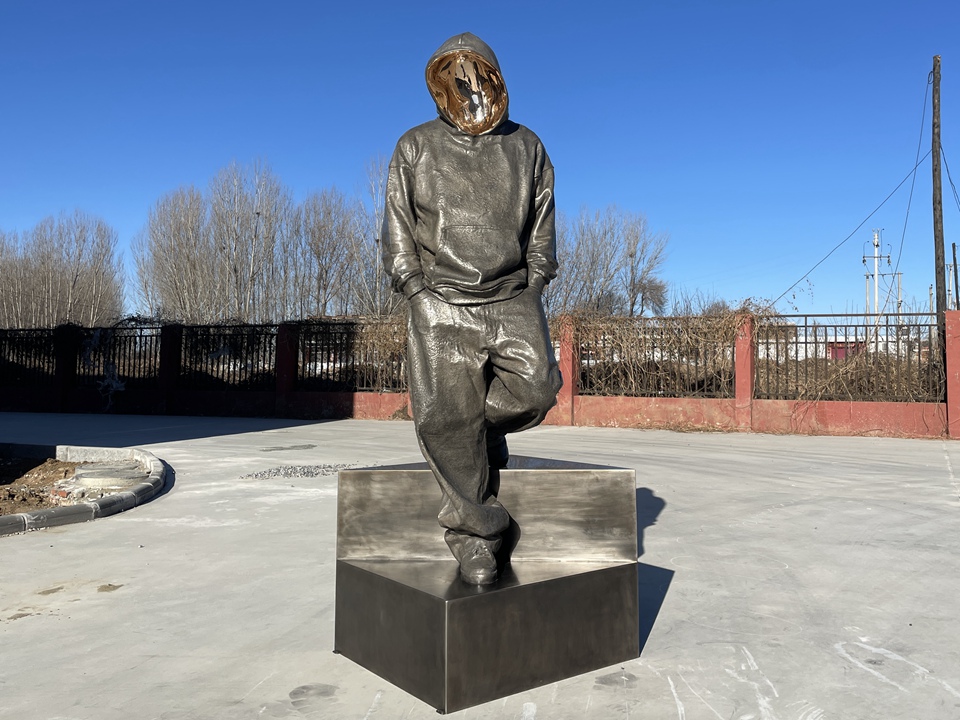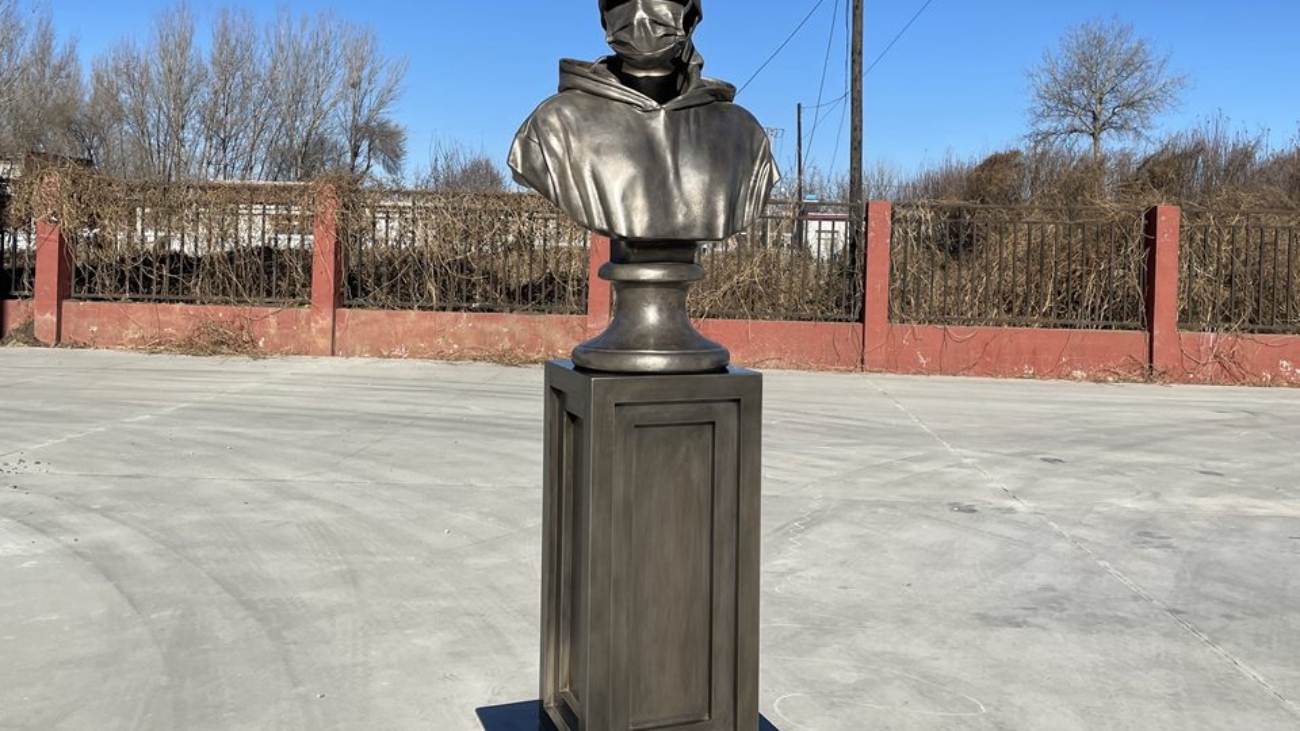For more than 6,000 years, lost wax casting has been a way to connect human creativity with metallurgical science. The things it makes are more than just decorations; they are cultural symbols. This method, which involves several steps to shape molten metal into complex shapes, is still the best at capturing permanency, emotion, and detail. Lost wax casting bronze sculpture, which is still popular in studios and galleries all over the world, is a way for artists to have a physical dialog with their materials, unlike digital art or mass-produced plastics that don’t last. This article looks at the history, technical skill, and modern importance of lost-wax casting bronze sculpture to show why it is still an important part of high art craftsmanship.

The Old Roots of Lost-Wax Casting Bronze Sculpture
Lost-wax casting bronze sculpture has its roots in the work of early metallurgists in Mesopotamia and the Indus Valley, who came up with ways to shape copper alloys into tools and ceremonial artifacts. By 3000 BCE, Sumerian artisans were utilizing simple lost-wax techniques to make small animal miniatures by pouring molten metal into clay molds made to look like wax models. The Sumerian masterwork Ram in a Thicket (c. 2600 BCE), which was uncovered in the Royal Cemetery of Ur, was made possible by this idea.
In ancient Greece, sculptors like Phidias and Praxiteles employed lost-wax casting to make bronze sculptures that looked just like gods, athletes, and heroes. The bronze statue of Zeus of Artemisium (460 BCE) shows the Greeks’ skill in both dynamic movement and anatomical correctness. It shows the thunder god in mid-stride. During the Shang Dynasty (1600–1046 BCE) in China, artists employed lost wax casting to make ceremonial axes and jars that combined symbolic potency with artistic beauty.
The Lost Wax Process: A Symphony of Steps
Lost-wax casting is a way to make a bronze sculpture that requires both engineering and art. The sculptor begins by making a detailed wax model, which is often made from a blend of tree resin and beeswax to make it more flexible. After that, layers of silica sand and liquid binder are added to the model to make a sturdy mold. The mold is fired in a kiln when it has dried. This melts the wax (thus the name “lost wax”) and hardens the ceramic.
The empty mold is filled with molten bronze that has been heated to 1,200°C (2,200°F) and flows into every crack and crevice of the original wax pattern. When the ceramic shell is carefully chipped away after cooling, a rough metal sculpture is exposed. The last procedures that make this unfinished casting a polished piece are chasing, polishing, and patination. Patination uses chemicals like liver of sulfur or ferric nitrate to create deep, protective colors. Chasing, on the other hand, involves careful carving to bring out details.
How long does a lost-wax-casting bronze sculpture last?
Lost wax casting makes bronze sculptures that are more durable and accurate than any other method. Die casting limits how complicated things may be, and sand casting produces noticeable seams. Lost wax casting, on the other hand, perfectly preserves complicated textures like cloth folds or leaf veins. The hollow nature of the finished piece makes it lighter without losing strength, which makes it great for jewelry that needs to be delicate or big installations.
Bronze is attractive since it lasts a long time on its own. A bronze sculpture made by lost wax casting can last for thousands of years with no care because it doesn’t rust, fade in the sun, or get damaged by vandals. The fact that ancient artifacts like the Head of a Roman Patrician (1st century CE) and the Gudea of Lagash (2144–2124 BCE) are still around today shows how strong the material is. Modern artists use this strength to make outdoor sculptures that can withstand extreme temperatures, such as polar frost or tropical humidity.
New Ideas: Merging Technology and Tradition
The basic ideas behind bronze sculpture manufactured using lost wax casting haven’t changed, but modern artists are using new tools to push the limits. Digital sculpting software like ZBrush lets designers make wax prototypes with pixel-perfect accuracy. This saves time and materials. 3D printers can now make complex shapes that were considered to be unachievable. They make resin models that can be used instead of hand-carved wax.
The environment’s long-term health has also become more important. Modern foundries are using electric induction furnaces and recycled alloys instead of fossil fuels to cast bronze. This helps them reduce their carbon impact. Some artists even use “eco-bronze,” which is a blend of silicon, copper, and recycled metals that gives out fewer pollutants and melts at lower temperatures.

Casting in Lost Wax The cultural impact of bronze sculpture
In addition to its technical worth, bronze sculpture manufactured by lost wax casting is very important to culture. In ancient Rome, bronze statues of emperors and generals were employed as propaganda because their realistic features made them look powerful and favored by the gods. Public commissions of days value diversity and strength. One example is The Awakening (1990), a bronze sculpture of a giant coming out of the ground. It was made using lost wax casting and is meant to represent social awakening in Washington, D.C.
Collectors also really like bronze sculptures manufactured with lost wax casting because they have a lot of emotional meaning. Auguste Rodin’s The Kiss was once sculpted in marble, but bronze castings of the lovers’ embrace make it much more passionate. A custom-made lost wax casting bronze sculpture of a pet or family member becomes a cherished heirloom for private collectors, and its patina develops deeper every year.
Conclusion: The Timeless Beauty of Lost-Wax Casting Bronze Sculpture
Lost wax casting bronze sculpture is a way to protest against how easy it is to throw things away in today’s world. Every work has a soul that mass manufacturing can’t equal because it has the DNA of its maker in it—the pressure of a chisel, the swirl of a brushstroke. Whether it’s in a museum, a city square, or a living room, the beauty and strength of lost-wax-casting bronze sculpture make people wonder.
For artists, the approach connects the past and the present. It allows them to honor old traditions while also welcoming new ideas. For collectors, it’s a way to invest in the future and a physical link to human creativity that will survive for a very long time. Lost-wax casting bronze sculpture is more than simply a method; it’s a way of thinking that reminds us that real art is always there, never changes, and is always remembered, just like bronze. Lost Wax Casting Bronze Sculpture: Making a Legacy with Fire and Metal
For more than 6,000 years, lost wax casting has been a way to connect human creativity with metallurgical science. The things it makes are more than just decorations; they are cultural symbols. This method, which involves several steps to shape molten metal into complex shapes, is still the best at capturing permanency, emotion, and detail. Lost wax casting bronze sculpture, which is still popular in studios and galleries all over the world, is a way for artists to have a physical dialog with their materials, unlike digital art or mass-produced plastics that don’t last. This article looks at the history, technical skill, and modern importance of lost-wax casting bronze sculpture to show why it is still an important part of high art craftsmanship.
The Old Roots of Lost-Wax Casting Bronze Sculpture
Lost-wax casting bronze sculpture has its roots in the work of early metallurgists in Mesopotamia and the Indus Valley, who came up with ways to shape copper alloys into tools and ceremonial artifacts. By 3000 BCE, Sumerian artisans were utilizing simple lost-wax techniques to make small animal miniatures by pouring molten metal into clay molds made to look like wax models. The Sumerian masterwork Ram in a Thicket (c. 2600 BCE), which was uncovered in the Royal Cemetery of Ur, was made possible by this idea.
In ancient Greece, sculptors like Phidias and Praxiteles employed lost-wax casting to make bronze sculptures that looked just like gods, athletes, and heroes. The bronze statue of Zeus of Artemisium (460 BCE) shows the Greeks’ skill in both dynamic movement and anatomical correctness. It shows the thunder god in mid-stride. During the Shang Dynasty (1600–1046 BCE) in China, artists employed lost wax casting to make ceremonial axes and jars that combined symbolic potency with artistic beauty.
The Lost Wax Process: A Symphony of Steps
Lost-wax casting is a way to make a bronze sculpture that requires both engineering and art. The sculptor begins by making a detailed wax model, which is often made from a blend of tree resin and beeswax to make it more flexible. After that, layers of silica sand and liquid binder are added to the model to make a sturdy mold. The mold is fired in a kiln when it has dried. This melts the wax (thus the name “lost wax”) and hardens the ceramic.
The empty mold is filled with molten bronze that has been heated to 1,200°C (2,200°F) and flows into every crack and crevice of the original wax pattern. When the ceramic shell is carefully chipped away after cooling, a rough metal sculpture is exposed. The last procedures that make this unfinished casting a polished piece are chasing, polishing, and patination. Patination uses chemicals like liver of sulfur or ferric nitrate to create deep, protective colors. Chasing, on the other hand, involves careful carving to bring out details.

How long does a lost-wax-casting bronze sculpture last?
Lost wax casting makes bronze sculptures that are more durable and accurate than any other method. Die casting limits how complicated things may be, and sand casting produces noticeable seams. Lost wax casting, on the other hand, perfectly preserves complicated textures like cloth folds or leaf veins. The hollow nature of the finished piece makes it lighter without losing strength, which makes it great for jewelry that needs to be delicate or big installations.
Bronze is attractive since it lasts a long time on its own. A bronze sculpture made by lost wax casting can last for thousands of years with no care because it doesn’t rust, fade in the sun, or get damaged by vandals. The fact that ancient artifacts like the Head of a Roman Patrician (1st century CE) and the Gudea of Lagash (2144–2124 BCE) are still around today shows how strong the material is. Modern artists use this strength to make outdoor sculptures that can withstand extreme temperatures, such as polar frost or tropical humidity.
New Ideas: Merging Technology and Tradition
The basic ideas behind bronze sculpture manufactured using lost wax casting haven’t changed, but modern artists are using new tools to push the limits. Digital sculpting software like ZBrush lets designers make wax prototypes with pixel-perfect accuracy. This saves time and materials. 3D printers can now make complex shapes that were considered to be unachievable. They make resin models that can be used instead of hand-carved wax.
The environment’s long-term health has also become more important. Modern foundries are using electric induction furnaces and recycled alloys instead of fossil fuels to cast bronze. This helps them reduce their carbon impact. Some artists even use “eco-bronze,” which is a blend of silicon, copper, and recycled metals that gives out fewer pollutants and melts at lower temperatures.
Casting in Lost Wax The cultural impact of bronze sculpture
In addition to its technical worth, bronze sculpture manufactured by lost wax casting is very important to culture. In ancient Rome, bronze statues of emperors and generals were employed as propaganda because their realistic features made them look powerful and favored by the gods. Public commissions of days value diversity and strength. One example is The Awakening (1990), a bronze sculpture of a giant coming out of the ground. It was made using lost wax casting and is meant to represent social awakening in Washington, D.C.
Collectors also really like bronze sculptures manufactured with lost wax casting because they have a lot of emotional meaning. Auguste Rodin’s The Kiss was once sculpted in marble, but bronze castings of the lovers’ embrace make it much more passionate. A custom-made lost wax casting bronze sculpture of a pet or family member becomes a cherished heirloom for private collectors, and its patina develops deeper every year.
Conclusion: The Timeless Beauty of Lost-Wax Casting Bronze Sculpture
Lost wax casting bronze sculpture is a way to protest against how easy it is to throw things away in today’s world. Every work has a soul that mass manufacturing can’t equal because it has the DNA of its maker in it—the pressure of a chisel, the swirl of a brushstroke. Whether it’s in a museum, a city square, or a living room, the beauty and strength of lost-wax-casting bronze sculpture make people wonder.
For artists, the approach connects the past and the present. It allows them to honor old traditions while also welcoming new ideas. For collectors, it’s a way to invest in the future and a physical link to human creativity that will survive for a very long time. Lost-wax casting bronze sculpture is more than simply a method; it’s a way of thinking that reminds us that real art is always there, never changes, and is impossible to forget, just like bronze.



Add a Comment